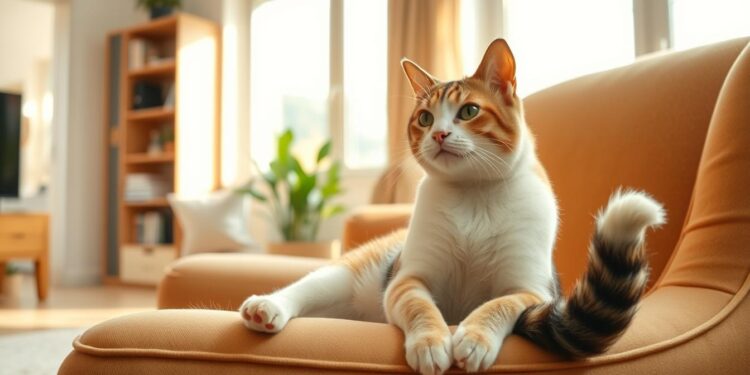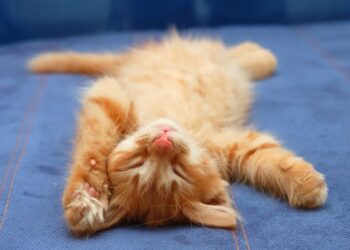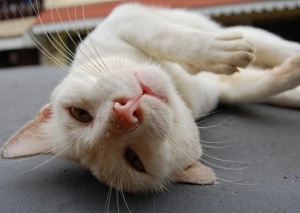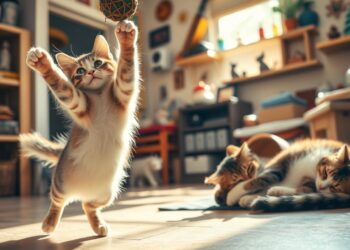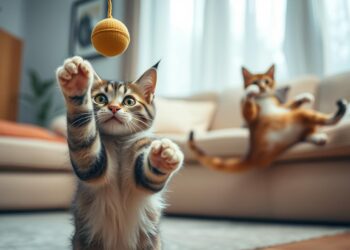Have you ever wondered what your cat is trying to tell you? Cats communicate their thoughts, emotions, and needs through a complex system of body language and vocalizations.
Cats are fascinating creatures with unique personalities, and understanding their behavior is key to building a stronger bond with them. By learning to interpret their subtle cues, you can ensure their physical and emotional wellbeing.
This comprehensive guide will explore nine key aspects of cat communication, helping you become fluent in “cat logic.” By the end of this guide, you’ll be able to identify potential health issues, reduce stress, and create a more harmonious living environment for both you and your feline companion.
The Secret Language of Cats
Decoding cat language is essential to understanding their behavior and emotions. Cats reveal their inner states through their body language, making it crucial to understand the context of their behavior and physical cues.
Why Cats Communicate Differently Than Humans
Cats have developed a sophisticated communication system that relies heavily on body language rather than vocalizations. Unlike humans, who primarily communicate verbally, cats use a combination of posture, facial expressions, tail positions, and vocalizations to express their needs, emotions, and intentions. This difference in communication style is rooted in their evolutionary history as both predators and prey, shaping their behavior to be nuanced and context-dependent.
The Importance of Context in Cat Communication
Context is crucial when interpreting cat behavior. The same physical cue can have different meanings depending on the environment, recent events, and the cat’s overall demeanor. To accurately understand cat behavior, it’s essential to consider the situation from the cat’s perspective, taking into account their past experiences, individual personality, and relationship with their owner.
| Context | Cat Behavior | Possible Meaning |
|---|---|---|
| Relaxed Environment | Tail held high, ears forward | Confidence, happiness |
| Stressful Situation | Tail tucked in, ears back | Fear, anxiety |
| Play or Hunt | Crouching, tail twitching | Excitement, predatory instinct |
By understanding the complexities of cat communication and considering the context in which they behave, cat owners can better interpret their cat’s needs and emotions, fostering a stronger, more empathetic relationship.
Understanding Cat Posture: What Their Body Position Reveals
Cats communicate primarily through body language, and understanding their posture is crucial to deciphering their emotional state. As animals that evolved as both predators and prey, cats’ body positions can indicate their level of comfort, trust, or fear.
A cat’s overall body posture provides the most immediate and comprehensive information about their emotional state. When a cat stretches out, they’re voluntarily exposing themselves, showing that they don’t feel threatened. On the other hand, a ball-shaped cat is usually not feeling open to advances.
Open vs. Closed Postures
Open postures, where the cat stretches out and exposes vulnerable areas like their belly, generally indicate comfort and trust in their environment and the people around them. In contrast, closed postures, where the cat makes themselves smaller by tucking in limbs and tail, typically signal fear, anxiety, or pain as the cat attempts to protect vulnerable body parts.
The Venus Cat Trap: When Belly Exposure Is Not an Invitation
The “Venus Cat Trap” refers to the common misunderstanding that a cat showing their belly is inviting a belly rub. In reality, this posture can be a defensive position that allows for all four paws with claws to be used if needed. Understanding the difference between a relaxed belly exposure during sleep versus a defensive belly exposure during confrontation can prevent painful misunderstandings with your cat.
A cat crouching low to the ground with a tense body may be preparing to flee from a perceived threat or experiencing physical discomfort that requires veterinary attention. By recognizing these postures, you can better understand your cat’s emotional state and respond accordingly.
Decoding Tail Language: Your Cat’s Emotional Barometer
The tail of a cat serves as a vital indicator of their mood and intentions. By understanding the various positions and movements of a cat’s tail, owners can gain insight into their cat’s emotional state.
Tail Positions and What They Mean
A cat’s tail position is a significant indicator of their confidence and emotional state. A high, vertical tail indicates a cat that is feeling confident, comfortable, happy, and friendly. Conversely, a low tail suggests fear or anxiety. A very fearful cat may tuck its tail between its legs to present a smaller target to potential aggressors. On the other hand, a high, puffed-out tail can indicate a cat trying to appear larger to intimidate potential foes.
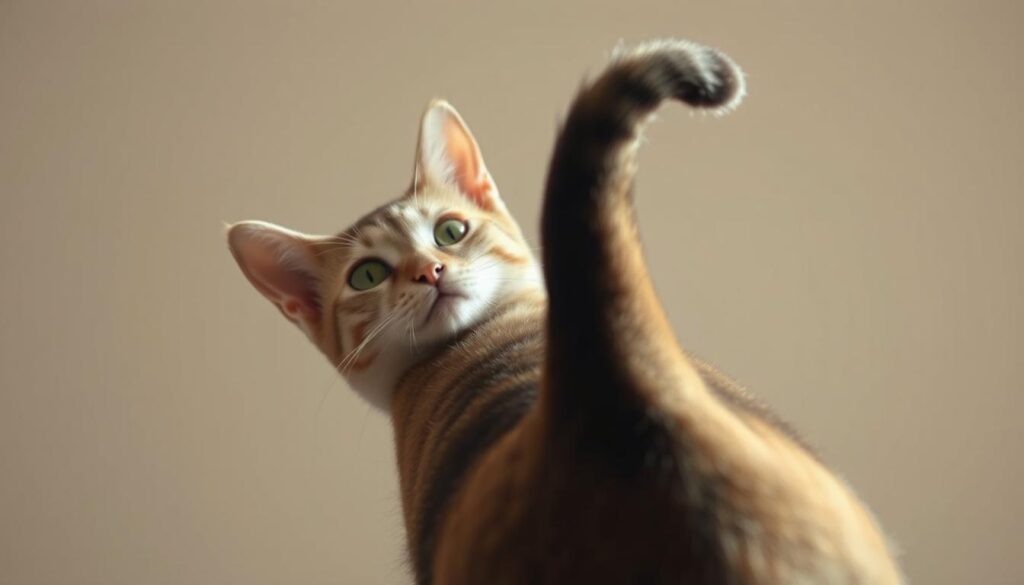
Why Cats Flick and Vibrate Their Tails
Cats also communicate through the movement of their tails. Tail flicking, where the tail moves rapidly back and forth, can indicate frustration, agitation, or intense focus, such as during hunting or play. In contrast, a vibrating or quivering tail, especially when held high, often signals excitement and positive anticipation, like when greeting a favorite person or before receiving food.
Understanding these tail movements can help cat owners better respond to their cat’s emotional needs, enhancing their bond and ensuring their cat’s well-being.
Reading Cat Ear Positions
Cats use their ears to convey a range of emotions, from confidence and curiosity to fear and aggression. The position and movement of a cat’s ears can provide immediate visual cues about their emotional state and level of alertness. By understanding the different ear positions and movements, cat owners can better interpret their cat’s behavior and respond appropriately.
Forward, Backward, and “Airplane” Ears Explained
A cat’s ear position can signal various emotional states. Forward-facing ears that are upright and relaxed indicate a content, curious, or attentive cat. In contrast, backward or flattened ears, often referred to as “airplane ears,” signal fear, anxiety, or aggression. The degree of ear flattening can correlate with the intensity of the emotion, ranging from mild concern to extreme fear or aggression.
How Ear Movements Signal Mood Changes
Ear movements can also indicate changes in a cat’s mood. Rapid ear movements, where the ears flick back and forth, often suggest conflicted emotions or uncertainty. Additionally, changes in a cat’s typical ear positioning patterns may indicate pain or discomfort. By recognizing these subtle ear movements, cat owners can anticipate mood changes before they escalate into more obvious behavioral responses.
The Eyes Have It: Understanding Cat Eye Communication
A cat’s eyes are incredibly expressive, providing insights into their feelings and arousal levels. By understanding these signals, cat owners can better comprehend their pet’s emotional state and respond appropriately.
Pupil Dilation and What It Means
A cat’s pupil dilation serves as a reliable indicator of their level of stimulation. Narrow, slit-like pupils typically indicate a calm, relaxed state, while fully dilated pupils signal high arousal, whether from excitement, fear, or aggression. For instance, a cat that’s feeling playful will often have dilated pupils, but this can also be a sign of fear or anger.
| Pupil State | Emotional State |
|---|---|
| Narrow, slit-like | Calm, relaxed |
| Fully dilated | High arousal (excitement, fear, aggression) |
The Slow Blink: Your Cat’s “I Love You”
The slow blink is one of the most affectionate gestures in feline communication, essentially translating to “I trust you” or “I love you.” When a cat blinks slowly at you, it’s a sign that they feel comfortable and secure in your presence. You can reciprocate this gesture by blinking slowly back at your cat, strengthening your bond.
Whisker Positions and What They Reveal
The position and movement of a cat’s whiskers can reveal a lot about how the cat is feeling. While not as overtly communicative as other body parts, whiskers provide subtle yet valuable cues about a cat’s emotional state.
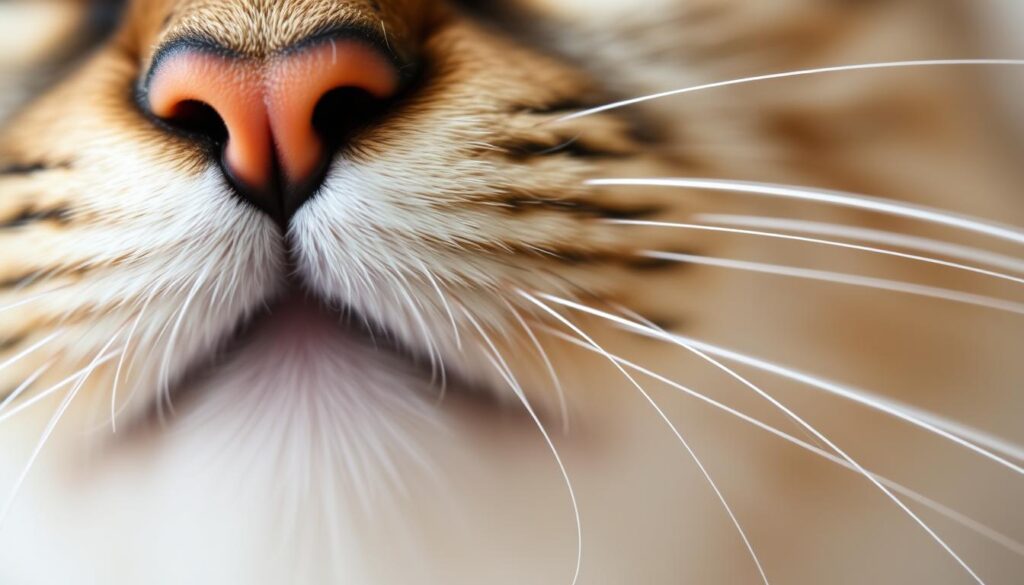
Forward vs. Backward Whiskers
Cats exhibit different whisker positions based on their emotional state. Confident cats tend to push their whiskers forward, indicating curiosity and confidence. In contrast, fearful or stressed cats pull their whiskers back against their cheeks, attempting to appear smaller and protect these sensitive organs.
Stress Signals in Whisker Movement
The movement and positioning of a cat’s whiskers can signal stress or anxiety. Dramatic changes in whisker position, especially when accompanied by other signs like ear flattening or pupil dilation, indicate a heightened emotional response. Recognizing these subtle cues can help owners better understand their cat’s body language and anticipate their needs, potentially reducing stress for both the cat and the owner.
Understanding Cat Behavior Through Vocalizations
The vocalizations of cats are a key aspect of their behavior, providing insights into their feelings and needs. While body language is a crucial foundation of cat communication, the sounds cats make offer additional layers of information about their emotional state, needs, and intentions.
Purring: A Complex Signal
Purring is one of the most recognizable sounds cats make, often associated with contentment. However, cats may also purr when they’re in pain or stressed, using it as a self-soothing mechanism. The context in which a cat purrs is crucial for understanding its emotional state.
Meows, Chirps, and Trills: Decoding Friendly Sounds
Cats use various vocalizations to communicate with humans and other animals. Meows can vary significantly in pitch, volume, and duration based on what the cat is trying to communicate, from greeting meows to demanding meows for food or attention. Chirps and trills, which sound like high-pitched rolling Rs, are typically friendly sounds often used by mother cats to call kittens and by adult cats to greet humans they’re fond of.
Warning Sounds: Growls, Hisses, and Yowls
When cats feel threatened, they may produce a series of warning sounds that escalate in intensity. These sounds include growls, hisses, yowls, and finally shrieks, providing clear signals that a cat is feeling increasingly threatened. Understanding these vocalizations can help owners respond appropriately to their cat’s needs.
| Vocalization | Meaning | Context |
|---|---|---|
| Purring | Contentment, self-soothing | Relaxation, pain, or stress |
| Meowing | Communication, needs | Greeting, demanding food or attention |
| Chirps/Trills | Friendly, maternal | Greeting, calling kittens |
| Growling/Hissing | Warning, fear | Feeling threatened, territorial |
| Yowling/Shrieking | Intense warning, distress | Highly threatened, in heat, or in pain |
Recognizing Signs of Happiness vs. Stress in Cats
Recognizing whether your cat is happy or stressed can be challenging, but there are key indicators to look out for. Cats have earned a reputation for being hard to read, but by understanding the constellation of signals that indicate happiness versus stress, owners can better respond to their cat’s emotional needs.
Body Language of a Content Cat
A happy cat typically displays relaxed body language with loose limbs, a gently curved or upright tail, forward-facing ears, and slow blinking or half-closed eyes that indicate trust and comfort. When a cat is happy, their posture is typically loose, with their limbs and tail stretched out away from their body when lying down. A happy cat might also cuddle up next to you or knead you with their paws, showcasing their comfort and trust.
Behavioral Changes That Signal Stress or Fear
On the other hand, stressed cats typically display tense body language with a hunched posture, tail held close to the body, flattened or backward-facing ears, and dilated pupils that indicate heightened arousal. Behavioral changes that may signal stress include increased hiding, decreased appetite, over-grooming leading to bald patches, and inappropriate elimination outside the litter box. By recognizing these signs of stress, owners can take steps to mitigate their cat’s anxiety and improve their overall well-being.
Creating an enriched environment with multiple resources, vertical space, hiding options, and play opportunities can significantly reduce stress and increase happiness in cats. By being aware of your cat’s behaviors and making adjustments accordingly, you can help ensure that your cat leads a happy and healthy life.
Identifying Pain and Illness Through Cat Behavior
Cats are notorious for their ability to conceal pain and illness, making it challenging for owners to detect health issues early. As a result, it’s crucial to monitor changes in behavior that may indicate a problem. Pet owners get used to their cat’s day-to-day habits and notice when there’s a change in their behavior. Slight changes are normal, but when these changes are sustained over time, this could be a sign of a medical or psychological condition that requires veterinary action.
Subtle Changes That Indicate Health Problems
Some concerning signs include excessive grooming, hiding more than usual, not eating, and changing their litterbox habits. Cats may also become withdrawn, anxious, or display unexpectedly aggressive behavior towards their owners and other animals. Pain can cause a cat to become either extremely quiet or extremely vocal. Other changes may include decreased grooming, reluctance to jump or climb, and altered social interactions.
When to Consult Your Veterinarian
If your cat exhibits any of these signs, it’s worth making an appointment with the vet. Changes in vocalization patterns, appetite, or litter box habits can signal underlying health issues. Regular preventive veterinary care is essential because cats often don’t show signs of illness until conditions are advanced. Keeping a journal of your cat’s normal behaviors and habits can help you identify subtle changes more quickly and provide valuable information to your veterinarian during consultations.
Putting It All Together: Becoming Fluent in Cat Logic
To truly understand your feline friend, you need to consider their body language, vocalizations, and behavior as a whole. Cats communicate in a complex way, using posture, tail language, ear positions, and vocalizations to convey their emotions and needs.
Becoming fluent in cat logic requires integrating all these individual communication signals into a comprehensive understanding. Context is crucial for accurate interpretation, as the same behavior can mean different things depending on the environment and the cat’s overall demeanor. By developing a baseline understanding of your cat’s normal behavior patterns, you can detect subtle changes that may indicate stress, illness, or pain.
Understanding cat behavior is not just about recognizing individual signs; it’s about seeing the bigger picture. This includes providing a comfortable environment with access to resources like clean litter boxes, food, and hiding places. By respecting your cat’s communication signals and providing consistent care, you can build trust and strengthen your bond.
The benefits of understanding cat logic are numerous, including a stronger human-feline bond, fewer behavioral problems, and earlier detection of health issues. By paying attention to your cat’s behavior and making adjustments accordingly, you can create a more harmonious household for both you and your pet.
